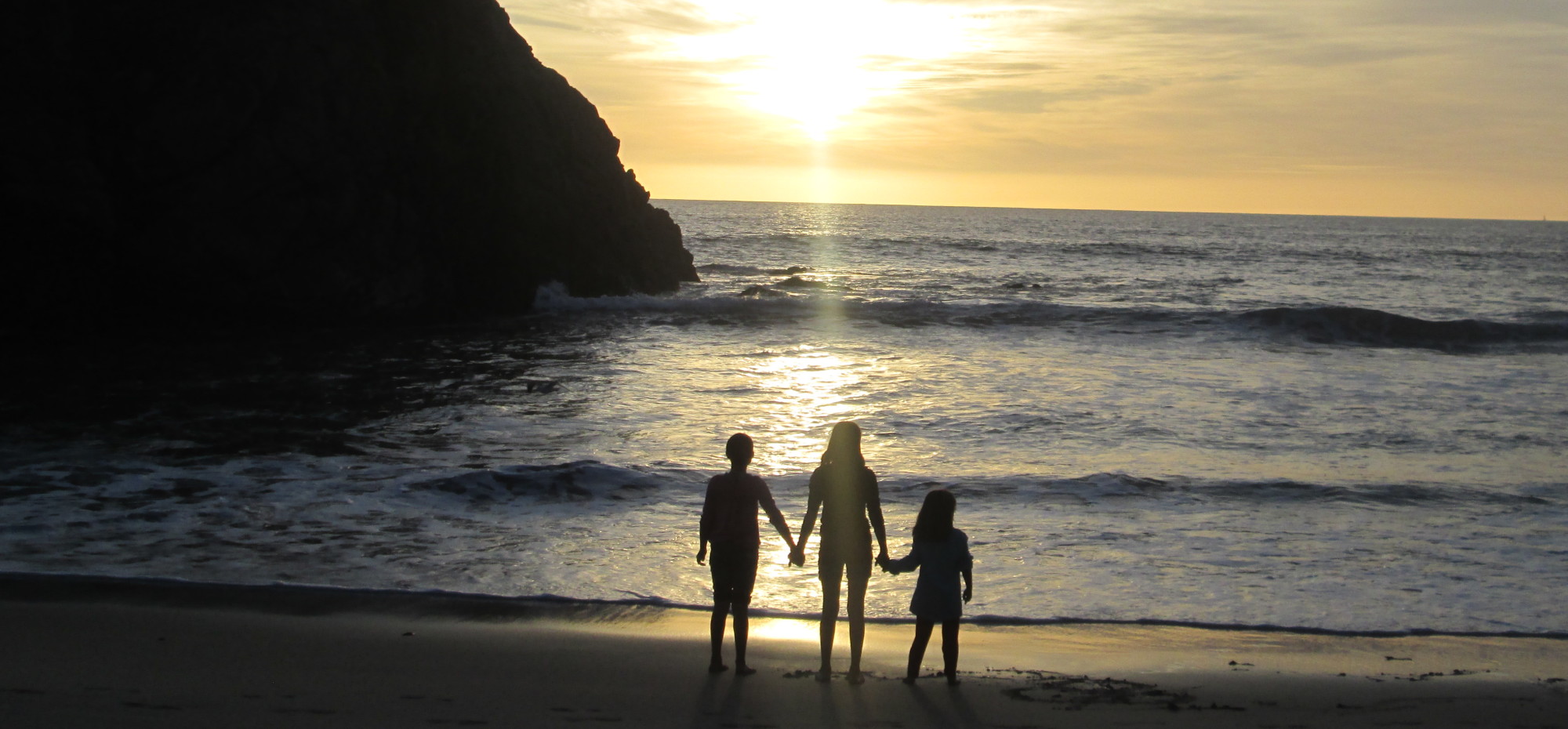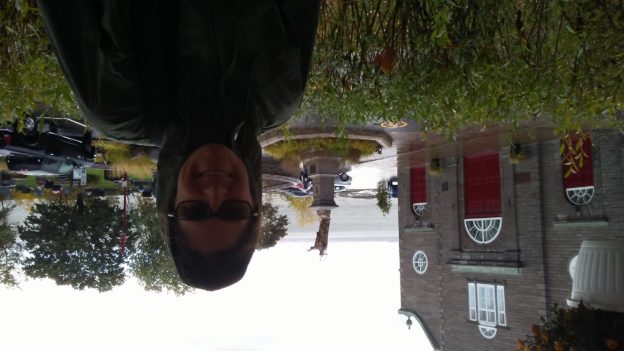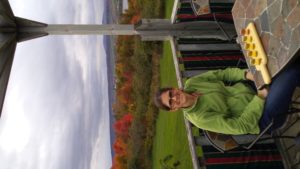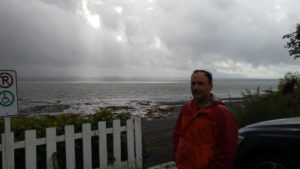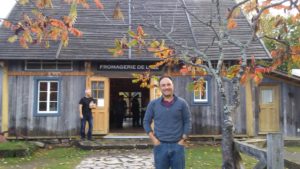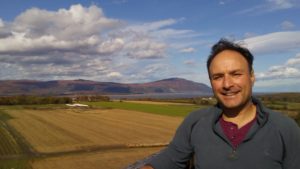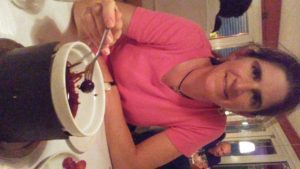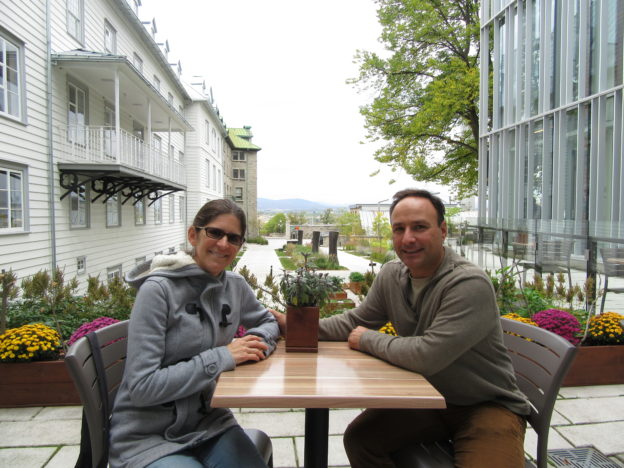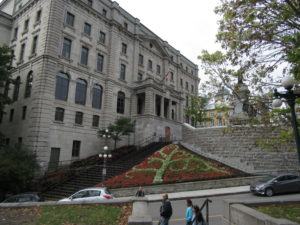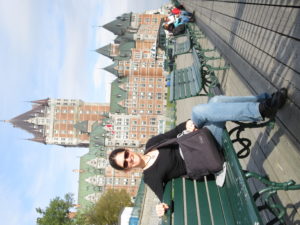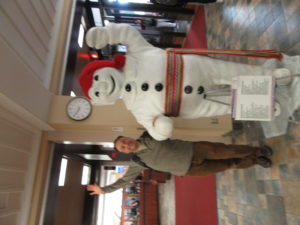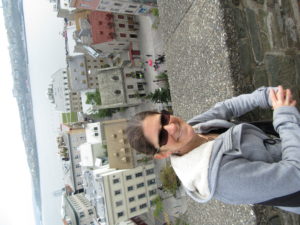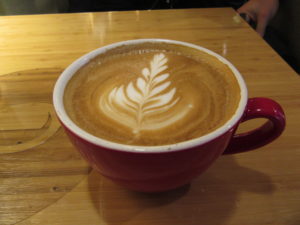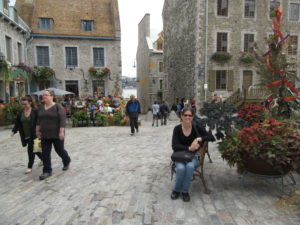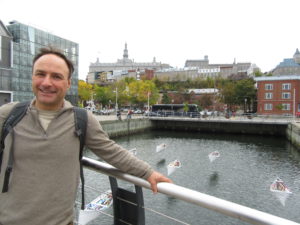With a world full of places to explore, it’s been our general policy to steer away from revisiting. There are notable exceptions: Orlando, San Francisco, Boston, New York. They’re all in the archives of this blog more than once.
On the other hand, this list is tiny compared to the list of places we’ve loved but will likely not see again. The cayes of Belize. Quito. Cody Night Rodeo and Custer State Park. Rome, wonderful Rome. We might not even make it back to the St. Louis City Museum.
So, readers might infer that there is something special about Quebec City. This is our third time visiting here, and we’re dedicating to it a milestone anniversary and a lovely long fall weekend.
Infer away. From the cobblestones right to the top of the tallest buildings, you’re surrounded here by rich history and cool modernism. Th restaurant scene (which Jen covered a bit yesterday) and the sounds of the street musicians shout out Quebec’s culture and class. It’s the kind of city where you can find anything you want if you walk around enough (more on this later).
In some ways, it feels like a new city to us. Where’s the white winter coat it wears for Carnival (and the day-glow snowmobile suits everyone was wearing 22 years ago)? Even in fall, this city is very clean and well-maintained, and the foliage rivals that which causes tourists from away to flood New England this time of year. It’s crowded with tourists here, too, but things seem bustling and convivial as opposed to oppressive and claustrophobic.
This is the first time we’ve ventured significantly outside the old city. On Saturday we walked down the hill to patronize the wonderful farmers’ market and to (somewhat unsuccessfully) seek out a hip neighborhood called the Saint-Roch district.
Then, on Sunday, we struck out even farther, to the farmlands that seem to surround this city in a way that suburbs and sprawl surround every other city we’ve explored in the past.
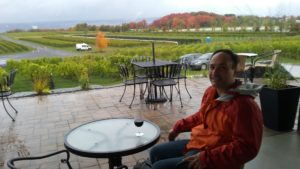
Also good for a vineyard visit — note the Chute-Montmorency is that white smudge in the distance toward the top left of the picture. This was during a break in the fog.
Jen orchestrated this trip and she should be congratulated for steering us toward the Isle d’Orleans. This island in the St. Lawrence River is 15 minutes from the walls of the old city, but calm, quiet and pastoral. It’s quiet, but the concentration of agro-tourism outlets is quite rich. To find a setting like this outside their city, a Bostonian might have to drive two hours to get to Vermont or lakes region New Hampshire or far-western Massachusetts.
Once across the bridge and onto the island, we had 40-plus miles of vineyards, cideries, bakeries and farm stands for us to wander through, and some of them were in view of the city! That is to say they would be in view of the city except that for much of the morning we were frustrated by drizzle and fog. During our first vineyard visit, the fog broke briefly and we were able to see first the river, then the mainland, and then we were even able to make out the white smear of the Chute- Montmorency, a waterfall higher than Niagra Falls, way over on the the far bank.
Then the fog came back and rain. Then more rain. Then rain and wind. We kept on driving along. The attractions on the north side of the island were mostly art galleries, we were told, and we were ok passing them by while staying dry in the car.
Just before noon, we stopped at almost the halfway point along the route. We waited for a restaurant by the water to open, and, wouldn’t you know it, first the wind went away, then the rain, and by the time we were eating, there was blue sky and sun. It was the nicest weather for the whole trip so far, and it allowed for extensive views east and west along the river. The soup was nice, too.
The sun and clouds battled each other for the rest of the afternoon while we stopped in a bakery, a locally-made vinegar shop, a boutique selling Quebecois-designed clothes that Jen really liked, a dairy that produces a version of the first cheese made in the Americas (we were not around back then to verify its accuracy, but it tasted very good roasted in a pan), a few cideries, a few vineyards, and a microbrewery. The tastings offered at the latter locales were small and Jen and I were sharing them; still, the day started to take on a bacchanal-like feeling. (The last vineyard we went to was even named after Bacchus.) The wines and hard ciders seem of fine quality to us, especially the ice wines and ciders which are produced from fruit harvested after they’ve frozen on their vine or tree.
All along the route were farms, some for hay and livestock, and others for the main produce crops on the island: strawberries, apples and grapes. Such is the climate here that all three of those crops were being harvested as we wandered past. (Strawberries in October!)
One other stop of interest was to climb a four-story tower (during one of the day’s sunnier moments) on the northeast corner of the island. Not only could we see well down the St. Lawrence, we could also look across to the north bank and see Mount Saint Anne, the ski resort that we’ll be visiting during February break. This weekend’s itinerary is serving as a reconnaissance mission for February’s family trip.
With the this reconnoitering goal in mind, we turned ourselves loose on the Old City again this evening in search of the fondue restaurant we visited during our first visit here — or something similar. It seems like the kind of dinner the girls would appreciate. We walked by dozens of other highly promising restaurants to investigate a “fondue” offering at one of the bars in the lower city, only to find the description on the menu drew a picture of something much more like mozzarella sticks than we had in mind.
So we walked back up the hill (no funicular for us this trip). Before we could decide which of the promising restaurants we might try, guess what we found at the base of the Chateau Frontenac itself? A creperie that featured a three- course fondue meal. Ask here, and ye shall receive.
And if you ask in makeshift French like ours, you’ll likely get answered in cheerful English.
